Pickup test: Isuzu D-Max Utility
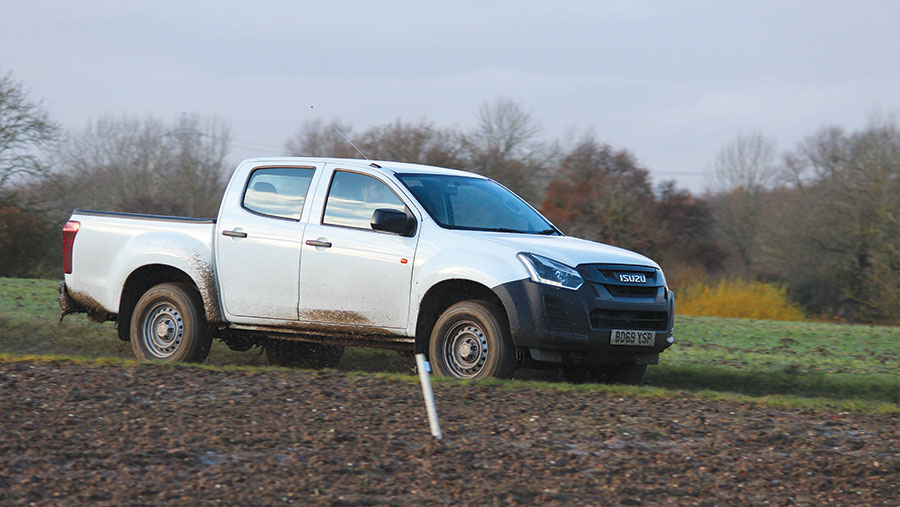
The D-Max Utility is a proper no-frills workhorse with a generous towing capacity, impressive payload and a reasonable price tag.
Couple this to a five-year, 125,000-mile warranty, and it makes it an attractive choice for a general farm vehicle.
Even the diminutive 1.9-litre engine performed better than expected. But the flipside is that it feels cheap, with feather-light doors and low-grade trim that makes it look dated compared with the competition.
See also: Pickup test: Isuzu D-Max Blade
Vital stats
- Engine 1.9-litre, four-cylinder diesel
- Power 164hp @ 3,600rpm
- Torque 360Nm @ 2,000-2,500rpm
- Transmission Six-speed manual
- Weight 1,909kg
- Payload 1,141kg
- Towing capacity 3,500kg
- Turning circle 12.2m
- Price £20,809
Engine and transmission
When Isuzu first dropped its engine size below the 2-litre mark, a lot of people (including us) were dubious that it would be up to the job.
But despite its hatchback-sized displacement, the 1.9-litre block was the most powerful in our test group, returning a healthy 164hp and 360Nm torque.
This gives it respectable performance for a base-spec truck, and on paper it has a rather frugal 40mpg fuel combined consumption figure.
Our real-world consumption test returned a more realistic 31.66mpg which, interestingly, was almost identical to the figure we got when we tested the top-spec Blade model a couple of years ago.
During spirited driving, the lack of cylinder capacity makes the D-Max seem a little revvy compared with some of its bigger-bored competitors. It’s less obvious in the manual, but we really noticed it when we drove the automatic version.
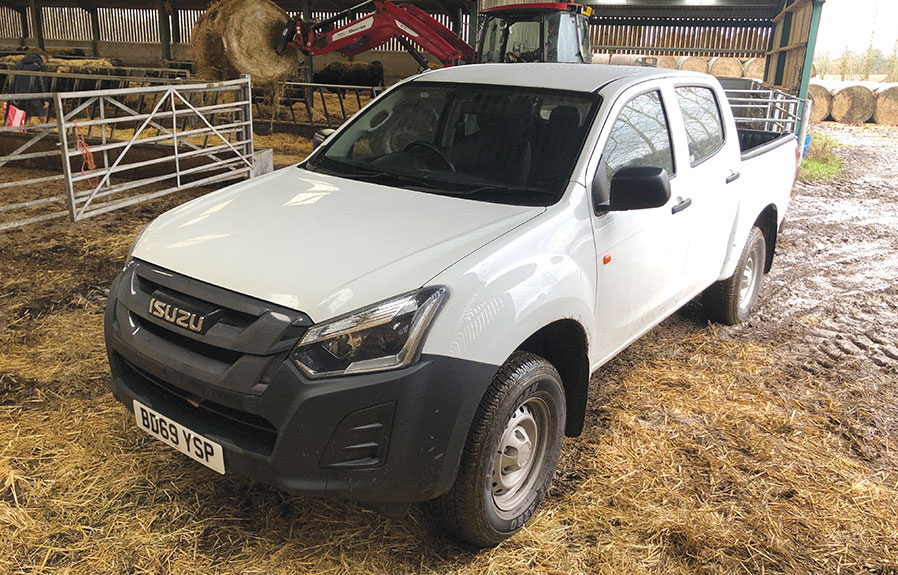
However, the small engine does have its benefits. Notably, the fact that Isuzu has managed to meet the Euro 6 emissions regs without having to resort to using AdBlue – something that competitors need to top up every 12,000 miles or so.
This only applies to the current model, though, and when the new range comes to dealers later this year, they will be fitted with AdBlue.
As for the transmission, our test truck came with a six-speed manual transmission, which is the only option on base-spec Utility trucks. This has a low first gear, which is a little tedious for everyday driving, but comes into its own when towing.
Interior
Despite the Utility being the bottom rung of Isuzu’s pick-up range, it comes with most of the features required for a working vehicle.
There are electric windows all round, air conditioning and a rudimentary Bluetooth hands-free radio, albeit something that looks like it’s been plucked from a Halfords bargain bucket. The fact that this isn’t integrated into the dash means it’s very easy to replace, though.
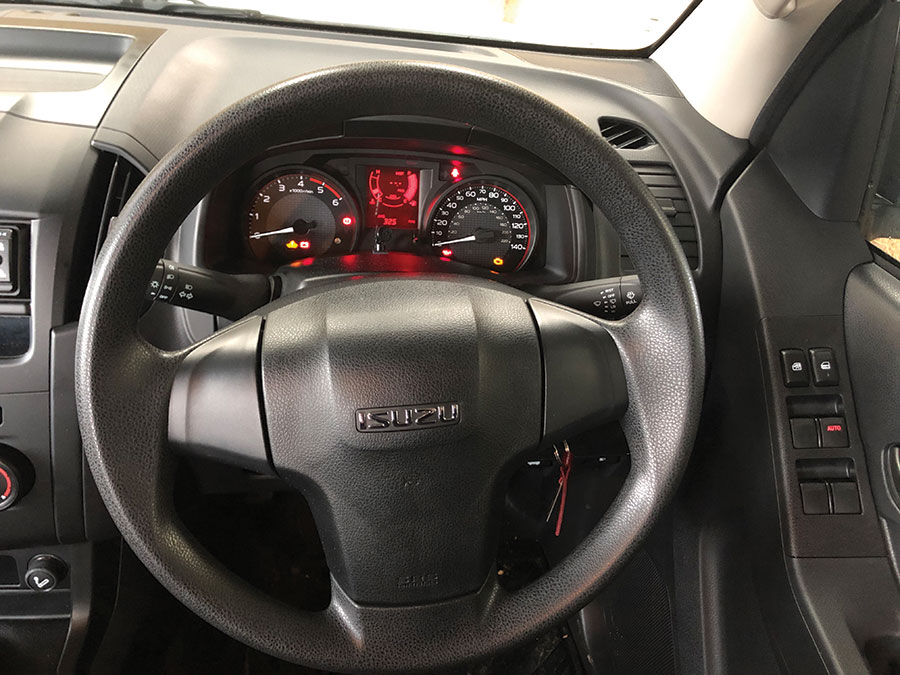
There is a decent amount of storage too, with two glove boxes and a cubbyhole under the central armrest. For those with young children, there are also Isofix seat anchors.
The rest of the interior is cheap and not particularly cheerful, with some fairly low-grade black plastics, plank-like cloth seats and a thin steering wheel.
The doors are also lightweight and shut with a tinny ping, unlike the solid clunk you get with a Toyota Hilux.
But who cares – there are plenty of high-end trucks out there, so it’s refreshing that Isuzu has managed to keep the Utility so simple.
We did spot one unexpected luxury though – all double-cab models come with heated door mirrors as standard, so there’s no need to shove your arm out of the window with a cloth in sub-zero temperatures.
Towing and off-road
Towing and carrying capacity is where Isuzu has really tried to make its mark with the D-Max.
All models, including the Utility, can tow a 3.5t braked trailer with twin or triple axles. This sets it apart from the Mitsubishi L200, which is limited to 3.1t with a twin-axle unit.
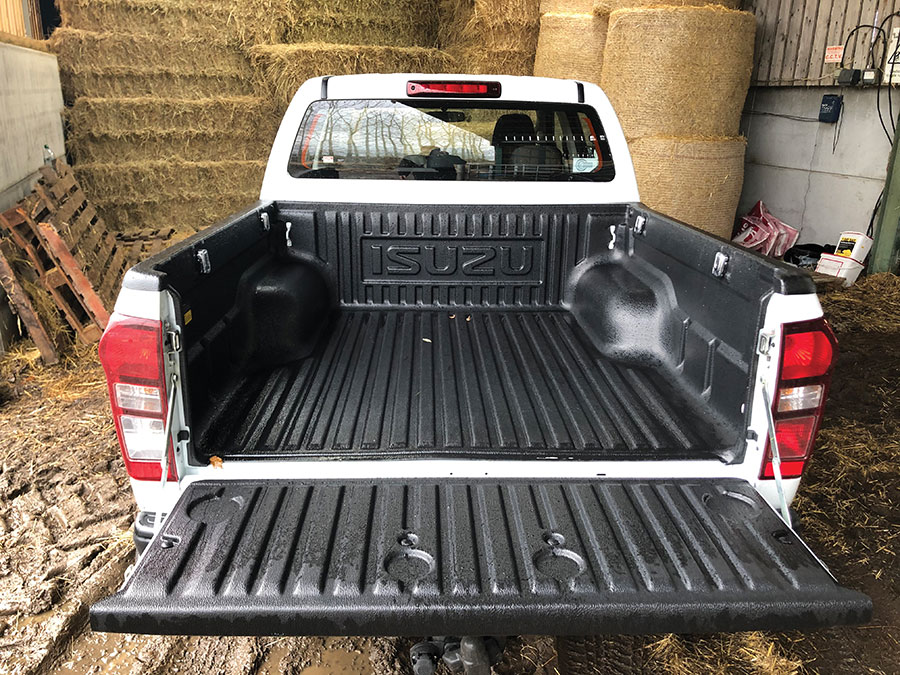
Payload is also a generous 1,141kg, which has been achieved by Isuzu keeping the kerb weight to just 1,909kg. That’s pretty light for a modern double cab truck and goes some way to explaining why the doors have such a featherweight feel to them.
Isuzu has also set the gearing to suit frequent towers, with a low first gear that makes it easy to set off without having to slip the clutch. It does make it almost redundant during normal driving though.
Other features include an automatic trailer sway control system, which senses if a trailer is starting to get out of shape and reduces the vehicle’s speed to counteract it.
There is also a hill-start feature, which applies the brakes for two seconds, allowing the driver to built up revs before setting off. Descending can be automated, too, with a system that uses the ABS to make a controlled downhill run, without the driver needing to touch the brake pedal.
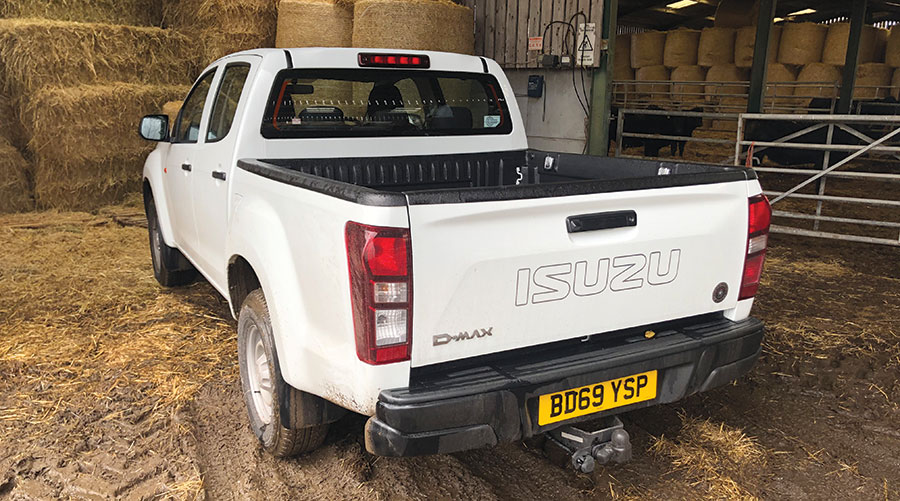
As for the four-wheel drive system, this is a typical switchable affair, with an electronic dial for changing between the three modes – 2H, 4H and 4L. There’s no diff-lock for the rear axle though, which means it doesn’t have the mud-plugging abilities of some others.
Instead, Isuzu relies on the traction control system to find grip, which gives limited success in very tough conditions.
Likes
- Towing capacity and payload
- Powerful for a 1.9-litre
- Low first gear for towing
- 125,000-mile/five-year warranty
Gripes
- Cheap finish
- Tinny doors
- No diff-lock
- Poor-quality radio
Rest of the range
Isuzu offers a bewildering range of pickups that span a colossal price range from £16,909 for the single-cab Utility truck to £40,180 for the fully loaded Arctic trucks AT35.
Sit the two next to one another, and there are some pretty distinct differences. But it’s worth noting that they all sit on the same basic platform.
So, peel away the leather trim, big wheels and fancy suspension, and the AT35 has a 1.9-litre diesel engine delivering 164hp and the same six-speed manual or optional automatic transmission.
Back at the entry-level end of things, buyers get the choice of three Utility models – a single cab (available in two- or four-wheel drive), an extended cab and the double cab we had on test.
These all come in van-grade flat white paintwork with steel wheels, but there is the option to upgrade to metallic silver or grey.
Those in search of a little more refinement have the option of the Eiger, which brings in alloy wheels, more colour choices, a reversing camera and the choice of an automatic transmission. Its starting price is only a couple of grand more than the Utility, so it’s not a huge leap in outlay.
Yukon and Utah models are the next two notches up the ladder, the latter of which comes with leather seats, Apple Car Play and Android Auto and 18in alloys.
From there, it starts to get a little silly, with the so-called Adventure range. This includes the Blade, XTR and Arctic Trucks AT35 model mentioned earlier, all of which have various expensive add-ons to justify their inflated price tags.

